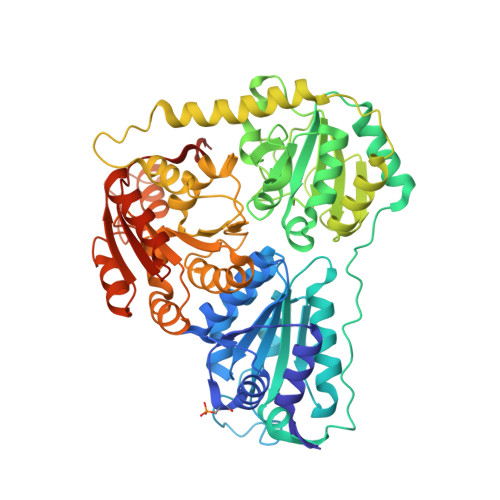Active-site engineering of benzaldehyde lyase shows that a point mutation can confer both new reactivity and susceptibility to mechanism-based inhibition.
Brandt, G.S., Kneen, M.M., Petsko, G.A., Ringe, D., McLeish, M.J.(2010) J Am Chem Soc 132: 438-439
- PubMed: 20030408
- DOI: https://doi.org/10.1021/ja907064w
- Primary Citation of Related Structures:
3IAE, 3IAF - PubMed Abstract:
Benzaldehyde lyase (BAL) from Pseudomonas putida is a thiamin diphosphate (ThDP)-dependent enzyme that catalyzes the breakdown of (R)-benzoin. Here we report that a point mutant, BAL A28S, not only catalyzes the decarboxylation of benzoylformate but, like benzoylformate decarboxylase (BFDC), is also inactivated by the benzoylformate analogues methyl benzoylphosphonate (MBP) and benzoylphosphonate (BP). The latter has no effect on wild-type BAL, and the inactivation of the A28S variant is shown to result from phosphorylation of the newly introduced serine residue. This lends support to the proposal that an appropriately placed nucleophile facilitates the expulsion of carbon dioxide from the active site in many ThDP-dependent decarboxylases.
Organizational Affiliation:
Department of Biochemistry, Brandeis University, Waltham, Massachusetts 02454, USA.

















